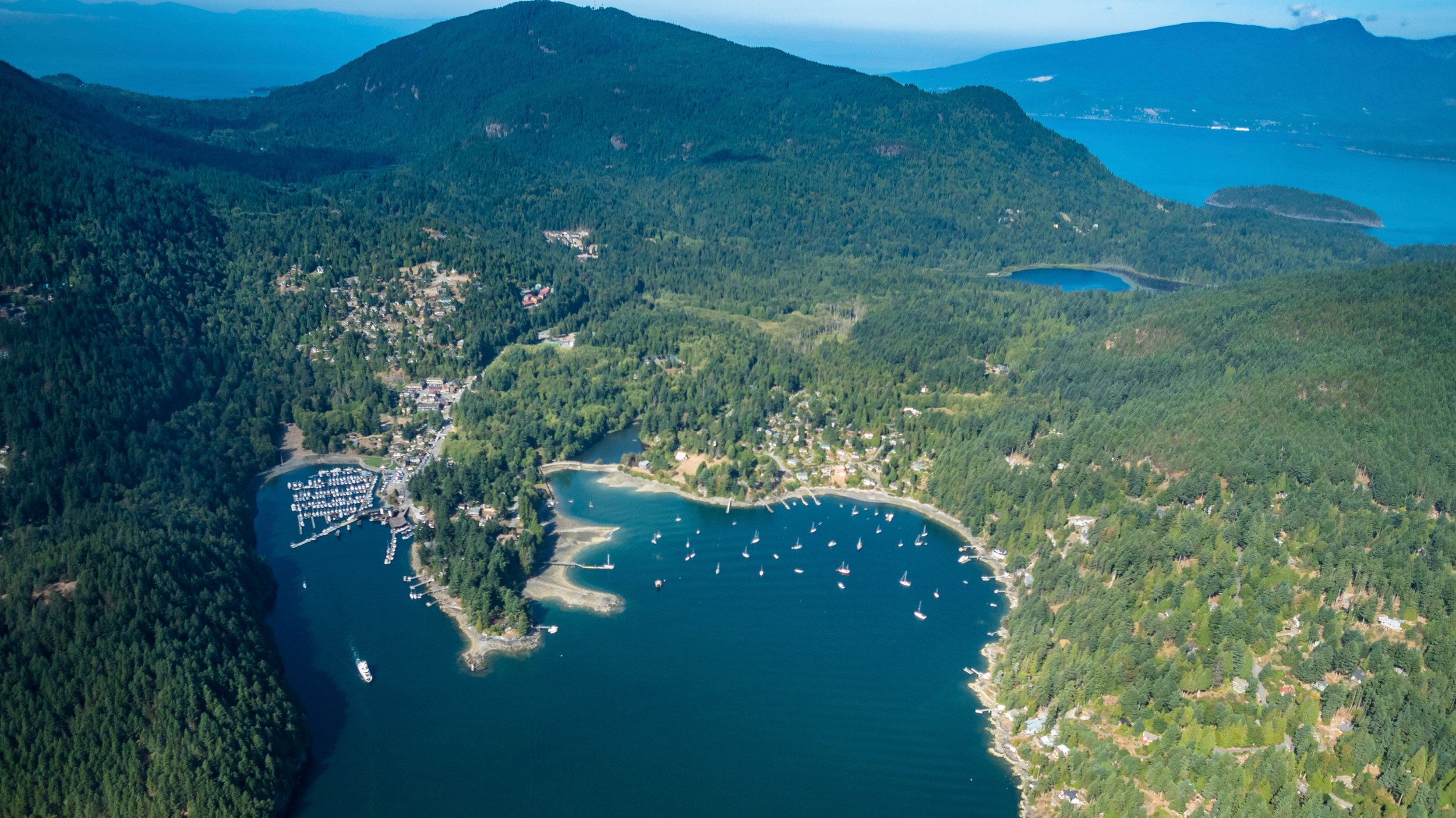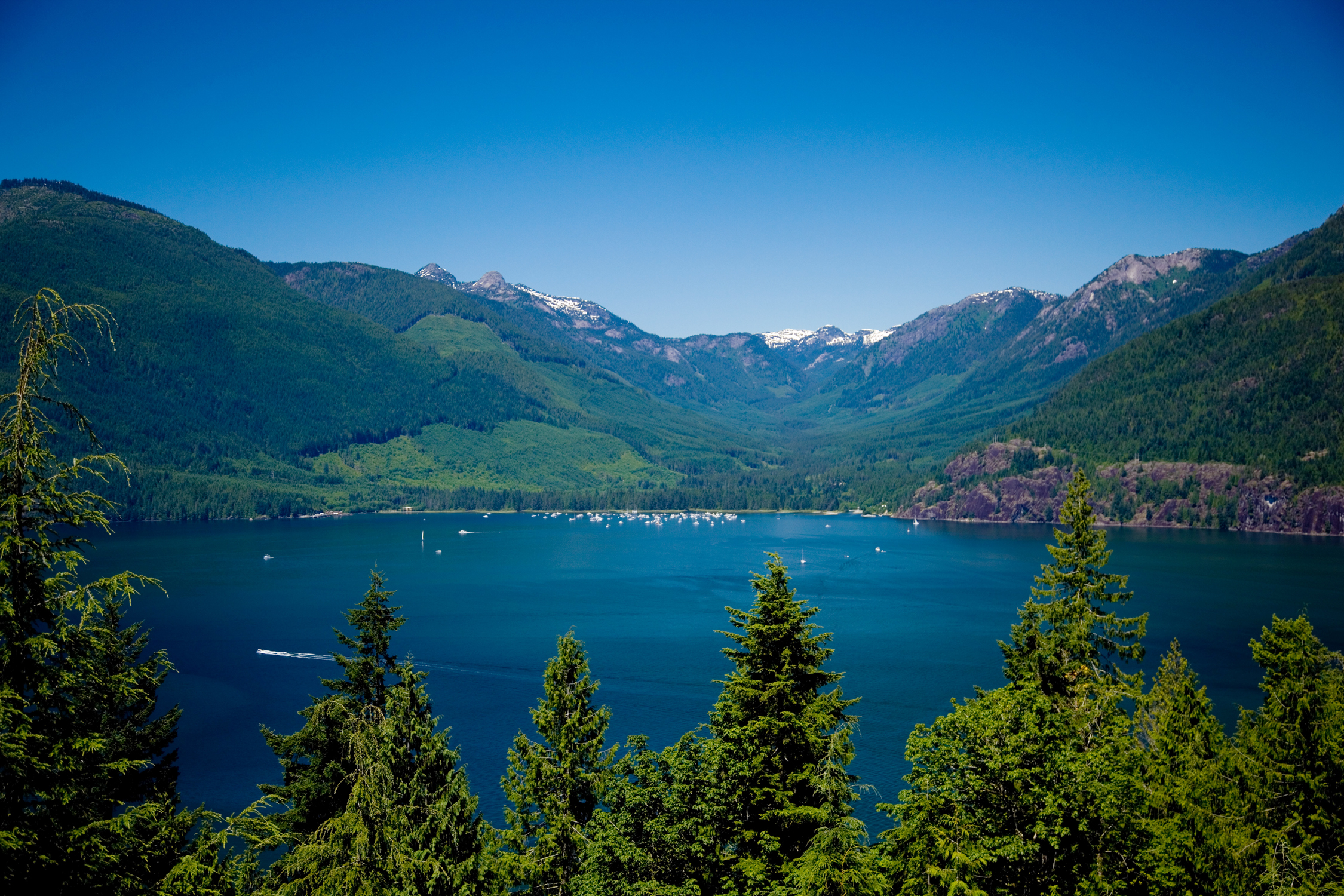Imagery (c) 2023 TerraMetrics
The Átl'ḵa7tsem/Howe Sound watershed includes a majestic fjord perched spectacularly on the edge of Metro Vancouver, British Columbia. Its landscape is dramatically scenic and encompasses remarkably diverse habitats capable of supporting over 5000 known marine and terrestrial species. This watershed provides critical ecosystem services, exceptional conservation, ecological, recreational and aesthetic values.
An integral part of the homeland of the people of the Skwxwú7mesh Uxwumixw (Squamish Nation), the region has served to provide the essentials of life for the Squamish and other Coast and Interior Salish people for the past 10,000 years or more. The marine and terrestrial resources of the Sound and its surrounding forest-clad mountains continue to be a valuable source of social and ecological goods and services for all who live in its sphere.
In 2021, UNESCO designated over 2,000 square kilometres – from mountain peak to ocean floor – as the Átl'ḵa7tsem / Howe Sound Biosphere Region, recognizing its global ecological significance along with its rejuvenation following almost a century of degradation from colonial, industrial harm. The biosphere region became only the 19th biosphere region in Canada and third in BC. Today, around 50,000 people live in communities hugging the coastline and millions more visit this spectacular region. Each has a role to play in shaping its future.
Zoning the Átl’ka7tsem/Howe Sound Biosphere Region
Three types of zones required in UNESCO Biosphere Regions; Core protected areas, Buffer zones and Transition Areas. Our Core areas are the five high elevation parks, Tantalus, Garibaldi, Pinecone Burke, Cypress and Tetrahedron, the Este-Tisiwth/Sigurd Creek Conservancy, and the Howe Sound Glass Sponge Reef Marine Refuges.
The map below illustrates other areas of protection and land use. The boundary encompasses the partial watershed for Átl’ka7tsem/Howe Sound (which stretches north to the Pemberton Icefield), following the same area as the Provincial Cumulative Effects Assessment and from height of land to bottom of the ocean floor.
The biosphere region is 218,723 hectares (2,187 square kilometres), 84% terrestrial and 16% marine. 5% of the terrestrial is privately owned or “urban” and 89% of the terrestrial area is under the management and shared stewardship of the Province of BC and First Nations. Approximately 42% of the terrestrial area within the region is under some form of management for conservation values. This is the unceded territory of the Sḵwx̱wú7mesh Úxwumixw (Squamish Nation) people. Tseli-Waututh, Musqueuam, Sto:lo, Shishalht, St’at’imc-Lillooet Tribal Council, In-shuck-ch, Katzie, Lil’wat and First Nations within the Hul'qumi'num Treaty Group have claims in the region.




Átl'ḵa7tsem / Howe Sound UNESCO Biosphere Region is diverse in its landscapes, habitats, species and activities. Enjoy some more photos here…
Photos from around the region by K.Hemmelgarn, B. Turner, B. Henwood, T. Turner, A. Taylor, T. Cyr, R. Simons, K. Krug



















